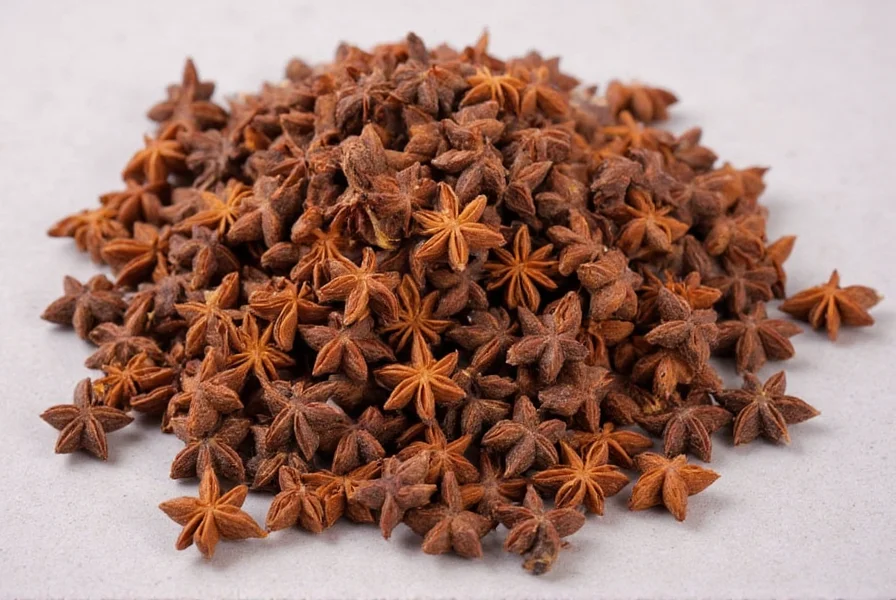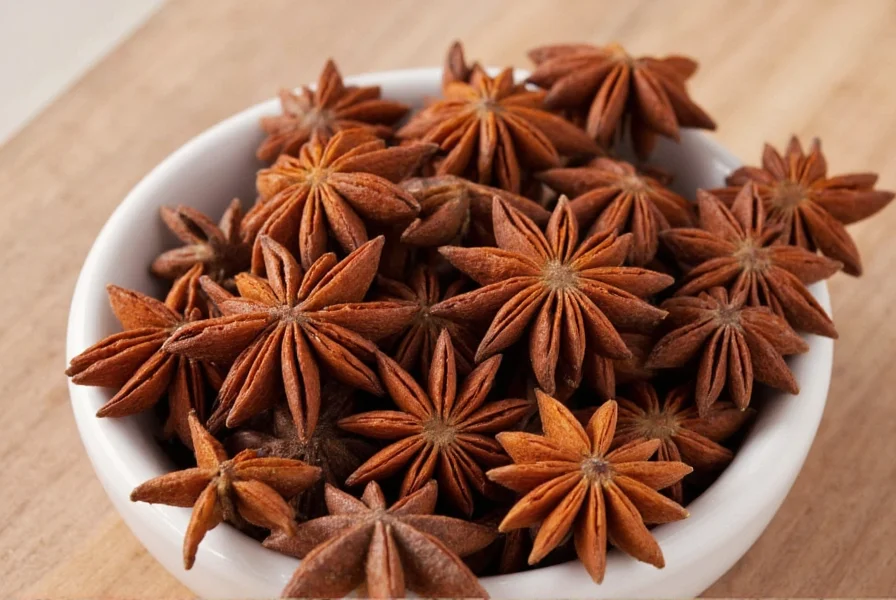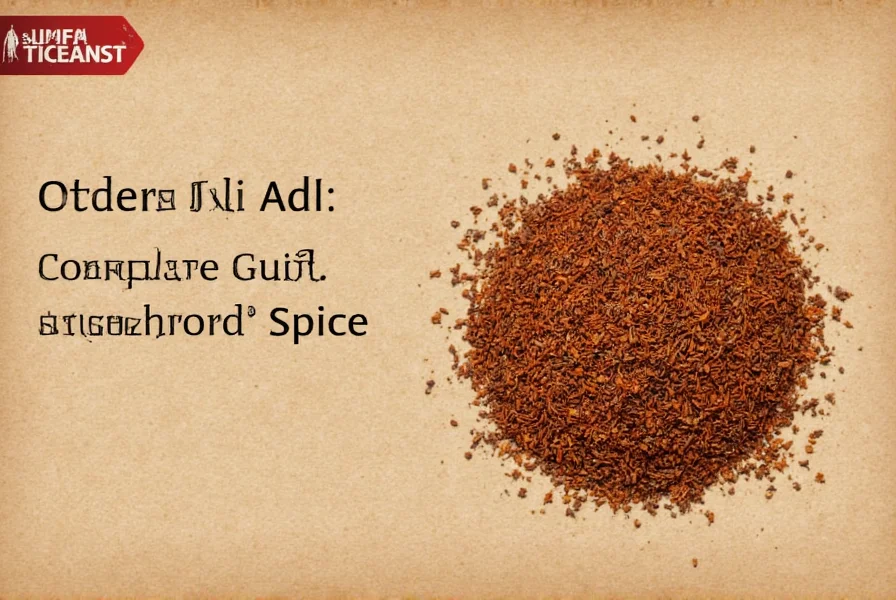Star anise (Illicium verum) stands as one of the most distinctive spices in global cuisine and traditional medicine systems. This unique spice, easily recognizable by its eight-pointed star shape, has been cultivated for centuries primarily in China and Vietnam. Unlike regular anise (Pimpinella anisum), which comes from a different plant family, star anise belongs to the magnolia family and offers a more intense, complex flavor profile.
Botanical Characteristics and Origin
The star anise tree grows as an evergreen shrub reaching 6-15 meters in height, producing flowers that develop into the characteristic star-shaped fruits. Each fruit segment contains a single seed, and the entire fruit is harvested just before ripening when the green pods turn brown. China remains the largest producer of star anise, accounting for approximately 90% of global supply, with Vietnam as the second-largest producer.

Culinary Applications of Star Anise
Chefs and home cooks worldwide value star anise for its versatility across multiple cuisines. In Chinese cooking, it's one of the five spices in the traditional blend and essential for braised dishes like red-cooked pork. Indian cuisine incorporates it into garam masala and various curry preparations. European bakers use it in spice cakes and mulled wines, while Middle Eastern recipes feature it in meat stews and rice dishes.
When using star anise in cooking, remember that its flavor intensifies with longer cooking times. Whole pods work best for slow-cooked dishes, while ground star anise suits baked goods. For optimal flavor extraction, lightly toast whole pods before use. A single star anise pod typically equals 1/2 teaspoon of ground spice in recipes requiring substitution.
Nutritional Profile and Health Benefits
Nutritionally, star anise offers modest amounts of manganese, iron, and vitamin C per serving. However, its primary value comes from bioactive compounds including anethole, shikimic acid, and various flavonoids. Research suggests potential health benefits associated with moderate consumption:
| Compound | Concentration | Potential Benefits |
|---|---|---|
| Anethole | 80-90% of essential oil | Antimicrobial properties, digestive aid |
| Shikimic acid | 3-7% of dry weight | Antiviral properties, precursor for Tamiflu |
| Limonene | 1-3% of essential oil | Anti-inflammatory effects |
Traditional medicine systems have long utilized star anise for digestive issues, respiratory conditions, and as a natural remedy for menstrual discomfort. Modern research continues to investigate its potential antimicrobial and antioxidant properties, though more clinical studies are needed to confirm many traditional claims.
Star Anise vs. Anise Seed: Understanding the Difference
Despite their similar names and flavor profiles, star anise and anise seed come from completely different plant families. Star anise (Illicium verum) belongs to the magnolia family, while anise seed (Pimpinella anisum) is part of the carrot family. The key differences include:
- Appearance: Star anise features a distinctive eight-pointed star shape, while anise seeds are small, oval-shaped seeds
- Flavor intensity: Star anise offers a stronger, more complex flavor with subtle notes of cinnamon and cloves
- Cultivation: Star anise grows on trees in subtropical climates, while anise is an annual herb grown in temperate regions
- Chemical composition: Both contain anethole, but star anise has additional compounds contributing to its unique profile
Proper Selection, Storage, and Usage
When purchasing star anise, look for deep reddish-brown pods with a strong, sweet aroma. Avoid pale or broken pieces, which indicate age and diminished flavor. Whole pods maintain their potency for up to three years when stored in an airtight container away from light and moisture, while ground star anise loses flavor within six months.
Chefs recommend toasting whole star anise pods in a dry skillet for 1-2 minutes before use to enhance their aromatic compounds. For tea preparation, steep one whole pod in hot water for 5-7 minutes. In baking applications, ground star anise works best when combined with complementary spices like cinnamon and cloves.

Safety Considerations and Potential Substitutes
While Japanese star anise (Illicium anisatum) is highly toxic and should be avoided, the Chinese variety (Illicium verum) is generally safe when consumed in culinary amounts. However, excessive consumption may cause neurological issues due to its potent compounds. Pregnant women should consult healthcare providers before using star anise medicinally.
When star anise isn't available, suitable substitutes include:
- Anise seeds (use 1:1.5 ratio - 1.5 tsp anise seeds for 1 star anise)
- Fennel seeds (milder flavor, use 1:2 ratio)
- Chinese five-spice powder (contains star anise among other spices)
- Anise extract (1/4 tsp extract equals one whole pod)
Global Trade and Sustainability
The global star anise market has grown steadily, with annual production exceeding 6,000 metric tons. Most commercial production occurs through sustainable agroforestry practices, as star anise trees grow well alongside other crops. However, climate change impacts on traditional growing regions have caused occasional supply fluctuations, affecting prices in international markets.
Conclusion
Star anise remains a valuable spice bridging culinary traditions and potential health applications across multiple cultures. Its distinctive flavor enhances both savory and sweet dishes while offering potential wellness benefits when consumed responsibly. Understanding proper selection, storage, and usage ensures you can maximize this spice's unique contributions to your kitchen and wellbeing.
What exactly is star anise and where does it come from?
Star anise is the star-shaped fruit of the Illicium verum tree, native to Southwest China and Northeast Vietnam. Each fruit consists of five to eight carpels arranged in a star pattern, with each carpel containing a single seed. The spice is harvested when the green pods turn brown and is primarily cultivated in China, which produces about 90% of the world's supply.
How does star anise differ from regular anise seed?
Despite similar names and flavors, star anise and anise seed come from different plant families. Star anise (Illicium verum) belongs to the magnolia family and grows on trees, while anise seed (Pimpinella anisum) comes from an annual herb in the carrot family. Star anise has a stronger, more complex flavor with subtle notes of cinnamon and cloves, and its distinctive eight-pointed star shape makes it easily recognizable.
What are the primary culinary uses for star anise?
Star anise is widely used across global cuisines. In Chinese cooking, it's essential for braised dishes and five-spice powder. Indian cuisine incorporates it into garam masala and curries. European bakers use it in spice cakes and mulled wines, while Middle Eastern recipes feature it in meat stews. Its flavor intensifies with longer cooking times, making it ideal for slow-cooked dishes, soups, and broths.
Are there any health benefits associated with star anise?
Star anise contains bioactive compounds like anethole, shikimic acid, and flavonoids. Traditional medicine systems have used it for digestive issues, respiratory conditions, and menstrual discomfort. Research suggests potential antimicrobial and antioxidant properties, though more clinical studies are needed. It's important to note that Japanese star anise is toxic, while Chinese star anise is generally safe in culinary amounts but should be consumed in moderation.
How should I store star anise to maintain its flavor?
Store whole star anise pods in an airtight container away from light, heat, and moisture. Properly stored, whole pods maintain their potency for up to three years. Ground star anise loses flavor more quickly and should be used within six months. To test freshness, crush a small piece and smell it - fresh star anise should have a strong, sweet, licorice-like aroma.











 浙公网安备
33010002000092号
浙公网安备
33010002000092号 浙B2-20120091-4
浙B2-20120091-4